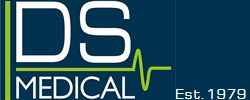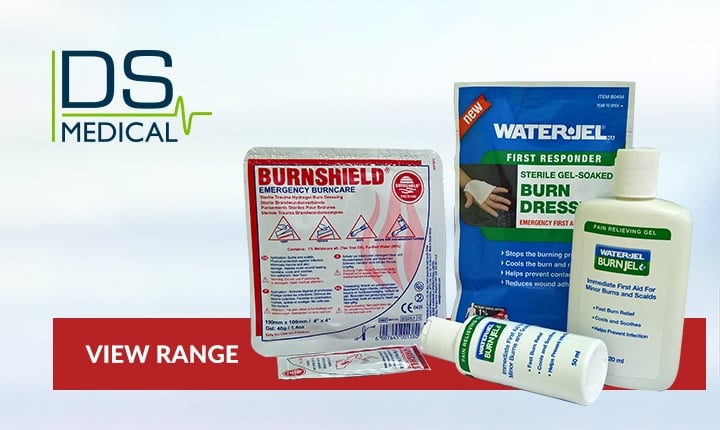Supporting Professionals Who Care
How to Treat Burns & Scalds
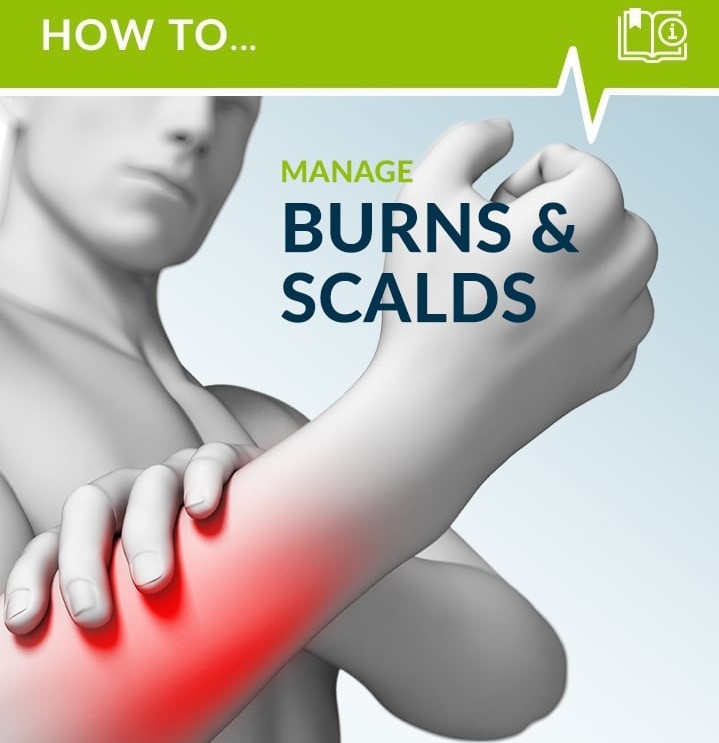
Introduction
Most people have suffered a burn or scald at least once in their lives, usually sunburn. Thankfully, instinct correctly tells us to cool it using cold water, but there’s much more to treating a burn than this basic step.
What is a burn?
The World Health Organisation define a burn as:
...an injury to the skin or other organic tissue primarily caused by heat or due to radiation, radioactivity, electricity, friction or contact with chemicals.”
What is a scald?
People often refer to scalds when talking about burns - the difference between them is that burns are caused by a dry source (for example, a flame or the sun) and scalds, a wet source (like hot liquids and oils).

Understanding the Depth of Burns
Burns are categorised as follows:
Superficial
(Previously named 1st degree burns)
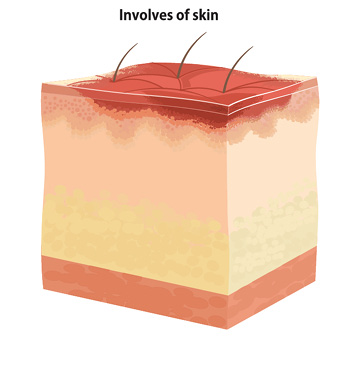

Partial thickness
(Previously named 2nd degree burns)

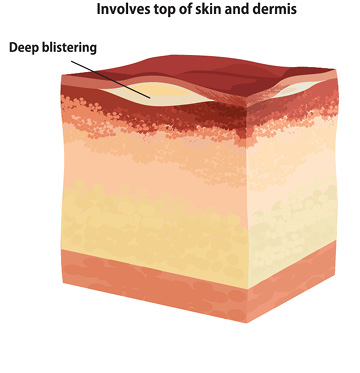
Full thickness
(Previously named 3rd degree burns)

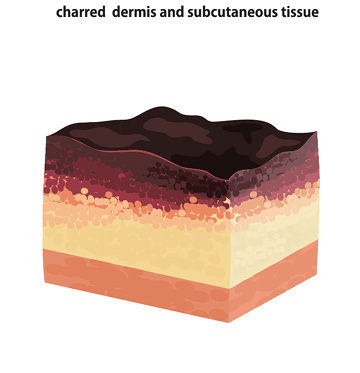
How to Identify a Superficial Burn:
Superficial burns are identified by redness, discomfort and pain, swelling may be present.
How to Identify a Partial Thickness Burn:
Partial Thickness burns are identified by blistering, redness, pain, swelling, may ooze and have evidence of superficial burn around the partial thickness burn.
How to Identify a Full Thickness Burn:
Full Thickness burns are identified by deep, significant destruction of skin layers, charred, waxy, smells burnt, unlikely to be painful at injury site due to nerve damage, evidence of partial and superficial thickness burn around the full thickness burn.

Causes of Burns
The cause of burns can be separated into three different categories:
THERMAL - Fire; radiation including sunburn and exposure to radioactive sources like X-ray; friction, and cold; for example, frostbite and exposure to substances like liquid nitrogen
ELECTRICAL - Low and high voltage, lightning strikes
CHEMICAL - Domestic and industrial chemicals
General Treatment of Burns
The principles of burns first aid treatment are:
Ensure you are not putting yourself in danger
Cool the burn, preferably with running cold water - do not apply ice
If water is not available, consider using hydrogel to remove the heat from the burn
Manage the risk of infection.
There are also a few clear Do NOTs when treating burns:
Do not apply lotions or creams
Do not apply butter or other fats
Do not burst any blisters

How To Treat Non-Chemical Burns
Generally, non-chemical burns should be cooled for at least 10 minutes
Blisters should not be intentionally burst as this can introduce infection and delay healing
Any restrictive clothing or jewellery in the burn area or vicinity should be carefully removed, as if swelling occurs it can restrict blood flow, cause pain and make it much harder to remove these items later on
Clothing that has adhered to a burn should be left alone as removing it can cause further damage to the skin/tissues
Any burn that is bigger than the affected patient’s hand should receive medical attention
Consider treating the patient for medical shock
How to Treat Specialist Burns
Some burns are more specialist and therefore require specific or varied treatment. Examples of specialist burns include:
Facial burns and burns to the airway, which quickly swell and cause airway obstruction
Chemical burns - some chemicals will react violently with the application of water
Electrical burns
Burns to the hands, feet, face and genital area
Burns that extend all the way around a limb, the chest or neck (circumferential burns)
All full thickness burns
Consideration of the physiological differences for children and the elderly and the higher risk burns present to these patients
Be mindful that burn injuries may not always be accidental
How to Treat Chemical Burns
The treatment for chemical burns differs from that of non-chemical burns with the key differences being that you should:
Identify the chemical and any specific treatment
Cool the burn for at least 20 minutes, usually with cool running water (unless the manufacturer instructions say otherwise)
Gently remove any adherent clothing, while flushing the area with water (if appropriate)
Ensure you do not cause the chemicals to splash onto other areas of the patient or onto you
How to Treat Electrical Burns
Electrical burns broadly sit into two categories based on origin:
Low voltage supply - domestic electricity supply
High voltage supply - overhead power cables, railway power lines and cables, lightning
In all such cases it is important to ensure you do not place yourself in any danger when providing assistance and first aid and to ensure medical attention is sought. In the case of high voltage burns it may be necessary to stay a set distance away from a patient, keep bystanders away and you will need to seek help from the emergency services.
Use of clingfilm and specialist burn dressings
Both first aid and pre-hospital care by ambulance staff advocates the use of clingfilm as part of the treatment for burns. It is important to be aware of the following when using clingfilm:
It is vital that the burn is sufficiently cooled first
The first two complete turns of the clingfilm roll should be disposed of before application
Clingfilm should be applied lengthways over a burn in layers. It must not be wrapped around an area as this will cause constriction, aggravate any swelling and cause additional pain to the patient.
Clingfilm should not be applied to chemical burns
A range of specialist burns dressings are available and the current BS8599 first aid kits now include a small burn dressing. These dressings are ideal in situations where access to cool running water is limited. As always, the use of such specialist dressings should be in accordance with the manufacturer's instructions and it is important to remember these items have expiry dates - so check your kit now and restock with us if needed.

Summary
The impact of burns is significant and they have the potential to be life-threatening. Fortunately, the vast majority of burns can be treated safely using the basics outlined above, without the need for attendance at hospital.
As first aid treatment advice is constantly evolving it is important to receive formal training and regular updates from a competent first aid provider. Having the latest first aid manuals and books available at home or in the workplace can also be helpful.
We all know that prevention is better than cure, but with rare glimpses of sunshine in the UK we are easily tempted to expose ourselves to it for too long. So before you end up with sunburn, catch yourself on the hot BBQ or scald yourself when next making a hot drink, why not head over to our burn care section and stock up on some burn care supplies?
Should you need further advice on burns kits at home or in the workplace, you can call a member of our team for help on 01329 311451.
